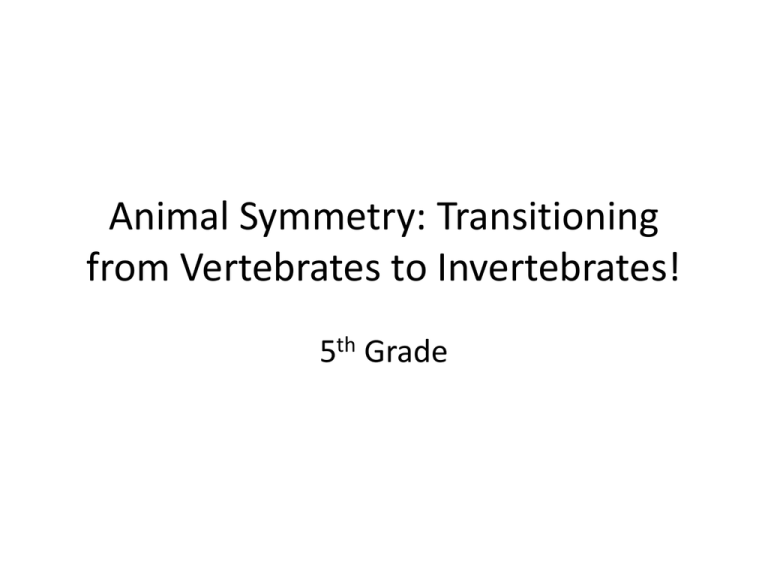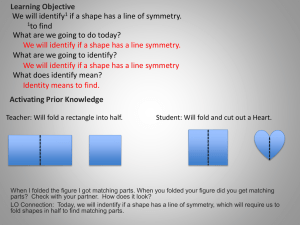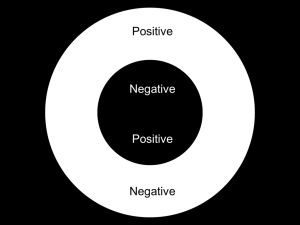Animal Symmetry
advertisement

Animal Symmetry: Transitioning from Vertebrates to Invertebrates! 5th Grade What are Invertebrates? • Animals without backbones • What percent of animals are Invertebrates? • 97 percent of all animals are invertebrates! Invertebrates are the only animals that can have no symmetry What is animal symmetry? Animal Symmetry Symmetry: the balanced arrangement of parts Animal Symmetry: the balanced arrangement of parts, characteristic of many animals Different Types of Animal Symmetry • 1) Bilateral Symmetry • 2) Radial Symmetry • 3) No Symmetry Bilateral Symmetry • there is one line of symmetry that divides an an animal into halves that are mirror images Bilateral Symmetry Where would you draw the line of symmetry? Radial Symmetry Radial Symmetry *Animals with radial symmetry have many lines of symmetry that all go through a central point Radial Symmetry No Symmetry Animal Symmetry Which one has bilateral symmetry and which one is radial symmetry? Animals with NO symmetry tend to have very simple body plans Depending on symmetry, animals share general characteristics. Animals with Radial Symmetry • The external body parts of animals with radial symmetry are equally spaced around a central point • Ex. sea stars, jelly fish, sea urchins Characteristics of animals with Radial Symmetry • All live in water • Most do NOT move very fast • They tend to stay in one spot, are moved along by water currents, or creep along the bottom of the ocean Characteristics of animals with Bilateral symmetry *Are larger and the most complex *They have a front end that typically goes first as the animal moves along *Can move quickly and more efficiently than animals with radial symmetry because bilateral symmetry allows for a streamlined body Characteristics of animals with Bilateral symmetry *most animals with bilateral symmetry have sense organs in their front ends that pick up information about what is in front of them Ex. a tiger has eyes, ears, nose, and whiskers on its head *sense organs help animals with bilateral symmetry obtain food and avoid enemies Bilateral Symmetry Bilateral Symmetry 1) What is symmetry? 2) How are bilateral symmetry and radial symmetry alike? How are they different? 3) What kind of symmetry does a grasshopper have? 4) What general characteristics do animals with radial symmetry share? 5) What four body characteristics do animals with bilateral symmetry usually have? 6) How would having sense organs in front be helpful to an animal?











